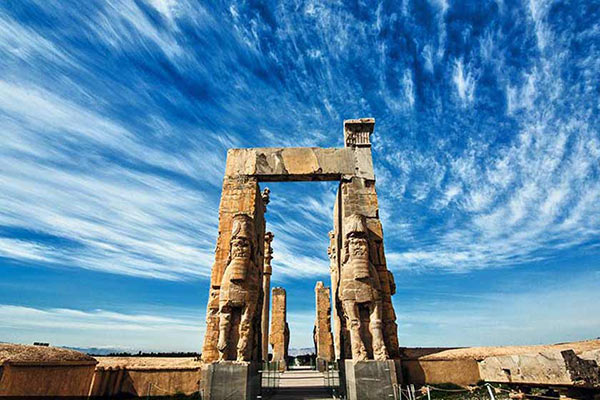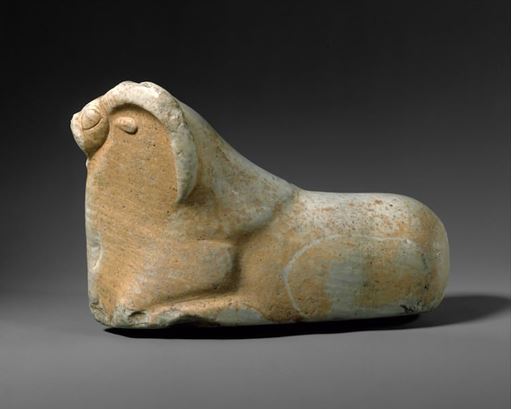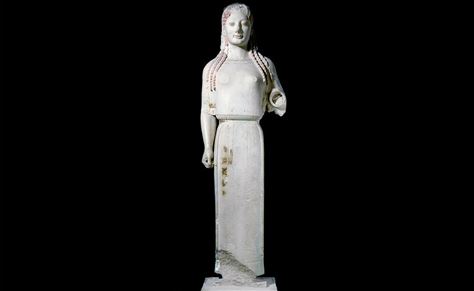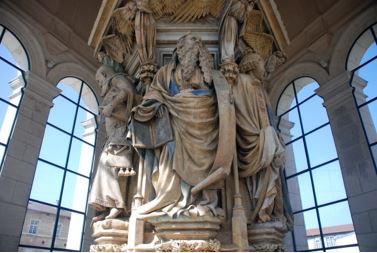- Tell : 09131114998
- Email : info@uranus-stone.com

Marble stone in different eras of history
- 1401/08/14 ,
- stone industries Uranus
- 0 Comment
Marble was one of the main building materials that was used to make statues since ancient times. In this article, we are going to explain about the minerals that make up this stone and its use in different lands. Stay with us.
What we call “marble” is, essentially, a kind of limestone, which in turn is a petrified sediment, deposited hundreds of thousands of years ago. The recognizable characteristic of marble is that it can be made to shine by polishing and the Greek word μάρμαρον means “shiny”. The ancients also used this word for several types of stone that are not limestone, like granite.
History of marble stone
Marble stone in Mesopotamia
In the Mesopotamian civilization, marble stone was used to make and shape the sizes of natural and imaginary animals. It has been customary to use other stones such as diorite and limestone.

Marble in Egypt
In Egyptian civilization, various types of stones were used in sculpting, among which marble and granite were used more. They used marble mostly in the construction of figures such as the gods of the pharaoh, the heads of the guardians of the temple. Many researchers believe that the use of marble has a better cut than other stones, and it is easy to create the details of the face and clothes in the stone.
Marble in Greece
While limestone has been extracted since ancient times, marble was not used except for special cases. Among the Bronze Age exceptions were the "idols" of the Cyclades. Mycenaean Greeks also used marble, but not always.
To make the marble stone more beautiful, the workers (Λιθουργοί, "stone workers") used iron tools at first. Even then, marble was rare, usually quarried for a specific project. When the project, which could have been an ancient sculpture or a classical temple, was finished, no stone was left unturned.
During the Archaic period in Greece, which was in the 8th century BC. Artists widely used marble stones in sculpture. Although the artist's work style is realistic, the sculptures are not natural and their size and movements are exaggerated.

During the classical period of Greece 300 to 500 years before Christ. The use of marble stones in the production of works of art increased among artists. The artists of this period were highly skilled in highlighting and creating more details in the sculptures.
During the Hellenistic period from 323 BC to 31 AD. Artists began to produce statues with the natural behavior and movement seen in many Greek works.
Although the Achaemenid kings Darius I the Great (521-486) and Xerxes (486-465) ordered several inscriptions in Susa to be written on marble tablets, the use of this type of stone was essentially exclusive to the Greeks.

By the Hellenistic era, there was sufficient demand for polished and colored stones to allow for mass production. The courts of the Ptolemaic, Antigonian, Attalid and Seleucid kings (i.e. the palaces of Alexandria, Pella, Pergamon and Antioch) were famous for their marble wall decorations. The first Pompeian style of wall painting, imitating marble slabs, was an indication of the popularity of the new art form.
Marble in Rome
Ancient Rome expanded the use of marble and marble became ubiquitous. It is known that the emperor Augustus found a city of bricks and left a city covered with marble. The main street of Ephesus was paved with marble.
It's easy to see why shiny stones have become so popular. Stone quarries (Latin: marmorarii) could find very large stones of consistent quality that were available in several colors and were very easy to work with. This type of stone was strong enough to be used in historical buildings, and they could also be used to make sculptures, furniture or other objects. Using multiple polishing techniques allows polishers to create surfaces that add to the appeal and shine.
In Roman civilization, sculptural works are divided into two groups: portraits and busts, which are adapted from Greek bronze statues. During the Republic period in Rome, artists produced portraits of people such as: politicians, army officers, historians as Sardis. During the period of the Roman Empire from 31 BC to 476 AD, marble stones replaced bronze statues and most of the statues were made in full height.

: The beauty of the marble stones was so great that, in the words of the poet Statius, describing the room where Domitian served dinner, he said
Beautiful African and Phrygian marbles compete with each other, and there are many examples from Sine and Chios, which in turn compete with the green of Sparta and the white of Luna.
Marble stone in medieval Europe
During the middle centuries (5th to 15th centuries AD), Italian artists made sculptures from stones that were quarried from around their living area or were pieces that were destroyed in wars. Unlike the statues of ancient times, artists turned marble into statues in the style of realism or simple imaginations, and the faces and organs were in their natural size or were used as small statues in the altars of churches.
Outside of Italy, artists were also interested in sculpture, but using materials such as other stones. Iron and wood were used to create works. Because marble was not easily available and its price was high. Therefore, it was used in small and limited sizes.
Marble stone in the Renaissance era
During the Renaissance period (14th to 17th century AD), artists changed classical art widely. One of the elements of Renaissance art was the revival of stone sculptures and the wide use of marble in sculpture.
Marble in the Renaissance in Italy
During the Renaissance in Italy, artists became interested in natural designs and naturalism. Although famous artists such as Leonardo da Vinci and Botticelli became more famous in the field of painting and drawing. Michelangelo was known as a famous sculptor in this era and he mainly used marble in his sculptures, one of his masterpieces is the statue of David.
Marble in the Northern Renaissance
The influence of the Italian Renaissance in the northern countries of the Alpine region, such as the Netherlands, Belgium, Germany, France, and England, is called the Northern Renaissance.
In these countries, a special and new style similar to Italian grids flourished and like Italian artists, the artists of these countries also made a big change in their classical style, although they used less marble and more iron and wood. One of the most famous marble sculptures in this period was the statue of Moses by the Dutch artist Klaus Sloot.

Marble in the Baroque period
In the Baroque period from the beginning of the 17th century to the end of the 18th century, there is a great interest in creating dramatic works with complex appearance and many decorations.Marble sculptures were made in this period by artists such as Gian Lorenzo and Bernini, which can be seen with intricate details and patterns and behavior and movements in the face and limbs.
Marble stone in the new era
Modern artists such as Constantin Brancusi distanced themselves from the methods and designs of previous periods and combined marble pieces with geometric and abstract lines and with primitive motifs.
in the end:
In medieval and Renaissance Italy, many stones brought to Rome and other cities in antiquity were reused ("spolia"). The stonemasons introduced Italian names such as giallo antico ("old yellow"), cipollino ("onion stone"), and pavonazzetto ("peacock"), which are still used by art historians and archaeologists. .
